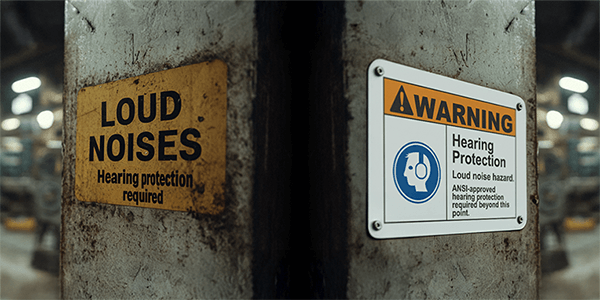Simple Tips for Safety as Manufacturing Powers On

So, there's great news in manufacturing, and then there's the bad news. The great news is that in the past six months, economic activity in a majority of facets in this industry sector have been expanding. This expansion grew the overall economy for going on 110 consecutive months, according to market research by the Institute for Supply Management (ISM). ISM is a non-profit worldwide professional supply management organization. Consumption is up, demand is robust. Where does worker safety fit into this busy industry scenario?
Pressures in Manufacturing
"We are currently overselling our forecast and don't see an end to the upswing in business," a transportation industry expert told ISM. Though at a smaller percentage point increase from the month before, May 2018 saw growth in the United States in new orders, production, employment, and supplier deliveries. The prices index had only a slight increase over April. However, inventories saw a 2.7 percentage point decrease. This would be the bad news, as suppliers for a third month were not able to maintain desired inventory expansion levels consistent with production demands. One of the pressures manufacturing faces is from a national labor shortage.
"It's very difficult right now to hire skilled, and even unskilled, labor in our industry," said Jacob Roach, an industrial metal worker in Portland, Oregon. "I am seeing foundries closing, companies merging ? and workers moving across the country ? and not for much pay. I have to increase my productivity, work more hours. We generally work safe, but sometimes safety is an afterthought for some busy, smaller facilities."
"The Backlog of Orders Index (in May) continued expanding with its highest reading since April 2004," said Timothy Fiore, Chair of the ISM Manufacturing Business Survey Committee. He said that despite labor and skill shortages, production and employment continue to expand. "Demand remains robust, but the nation's employment resources and supply chains continue to struggle. (Survey) respondents say price pressure at their companies is causing price-increase discussions," he said.
Managing Safety
From chemical manufacturing to metal fabrication, each manufacturing company and field has its own unique hazards. However, there still are some common safety hazards that each company will generally face:
- Falls: Warn of falling or climbing dangers, and remind workers to use personal protective equipment through signs and labels. Ensure facility safety and compliance though OSHA's guidelines.
- Machine guarding: Make sure guards are installed properly to prevent injuries, such as amputations by machinery. Use visual cues to warn of pinch points and other potentials for injury using signs and labels.
- Electrical: Keep cables neat and organized through wire marking best practices. Master electrical safety with articles, videos, guides, and more.
- Lockout/tagout: Prevent life-altering accidents by following safety practices for LO/TO.
- Powered machines and vehicles: Mark forklift traffic areas and create pedestrian friendly paths with floor marking.
When there are weak links in the supply chain that can continue on through to the value chain, those hindrances could also weaken any safety program. New workers on the scene do not have the same level as more seasoned workers. This could create significant safety concerns at a facility. Increase safety talks, hazard education, and job training for both new and older workers. Practice what is required under federal and state occupational and health safety laws. Establish a strong safety risk-management program and create a safety culture to manage the risks that come with labor shortages and operational demands.
Related Resources

5 Ways to Make Workplace Safety Signs Stand Out
How Safety Signage Improves Hazard Communication and Employee Awareness Workplace safety signs play a key ...
Read
How Custom Vinyl Labels Help Facilities Boost Safety and Compliance
Why Are Premium Custom Vinyl Labels Important forWorkplace Safety? Premium custom vinyl labels are gaining ...
Read
Crucial Objectives for Industrial Professionals
Workplaces are adjusting goals and protocols to meet new and changing demands. Here are a few key objectives ...
Read.png)





